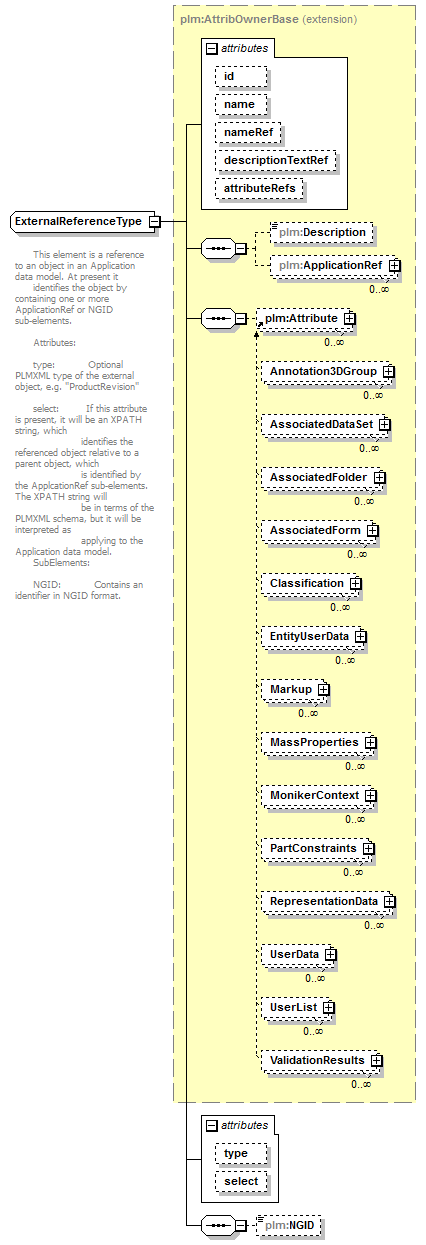| diagram |  |
||||||||||||||||||||||||||||||||||||||||||||||||
| namespace | http://www.plmxml.org/Schemas/PLMXMLSchema | ||||||||||||||||||||||||||||||||||||||||||||||||
| type | extension of plm:AttribOwnerBase | ||||||||||||||||||||||||||||||||||||||||||||||||
| properties |
|
||||||||||||||||||||||||||||||||||||||||||||||||
| children | plm:Description plm:ApplicationRef plm:Attribute plm:NGID | ||||||||||||||||||||||||||||||||||||||||||||||||
| used by |
|
||||||||||||||||||||||||||||||||||||||||||||||||
| attributes |
|
||||||||||||||||||||||||||||||||||||||||||||||||
| annotation |
|
||||||||||||||||||||||||||||||||||||||||||||||||
| source | <xsd:complexType name="ExternalReferenceType"> <xsd:annotation> <xsd:documentation> This element is a reference to an object in an Application data model. At present it identifies the object by containing one or more ApplicationRef or NGID sub-elements. Attributes: type: Optional PLMXML type of the external object, e.g. "ProductRevision" select: If this attribute is present, it will be an XPATH string, which identifies the referenced object relative to a parent object, which is identified by the ApplcationRef sub-elements. The XPATH string will be in terms of the PLMXML schema, but it will be interpreted as applying to the Application data model. SubElements: NGID: Contains an identifier in NGID format. </xsd:documentation> </xsd:annotation> <xsd:complexContent> <xsd:extension base="plm:AttribOwnerBase"> <xsd:sequence> <xsd:element name="NGID" type="xsd:string" minOccurs="0"/> </xsd:sequence> <xsd:attribute name="type" type="xsd:string" use="optional"/> <xsd:attribute name="select" type="xsd:string" use="optional"/> </xsd:extension> </xsd:complexContent> </xsd:complexType> |
attribute ExternalReferenceType/@type
| type | xsd:string | ||
| properties |
|
||
| source | <xsd:attribute name="type" type="xsd:string" use="optional"/> |
attribute ExternalReferenceType/@select
| type | xsd:string | ||
| properties |
|
||
| source | <xsd:attribute name="select" type="xsd:string" use="optional"/> |
element ExternalReferenceType/NGID
| diagram |  |
||||||
| namespace | http://www.plmxml.org/Schemas/PLMXMLSchema | ||||||
| type | xsd:string | ||||||
| properties |
|
||||||
| source | <xsd:element name="NGID" type="xsd:string" minOccurs="0"/> |
XML Schema documentation generated by XMLSpy Schema Editor http://www.altova.com/xmlspy